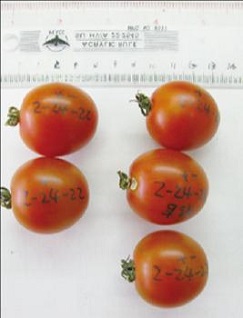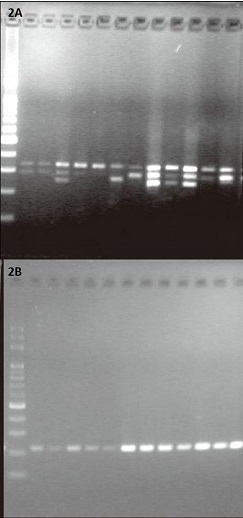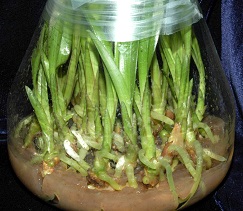
‧ The line Sa21-0-0-0224-22 was bred by using molecularmarker assisted selection technique. 
‧Electrophoresis results for SSR molecular markers.2A. Exhibiting polymorphism. 2B. Not exhibiting polymorphism. 
‧Developed the tissue culture propagation system ofCymbidium and Taiwan native orchids. |
We are engaged in the breeding of TYCLVresistant tomato assisted by molecular markers. Rapid polymerase chain reaction technology that screens TYCLV-resistant offspring during the seedling stage was developed. Two resistant tomato lines with Ty-2 gene were transferred to seed companies successfully. In addition, the rapid DNA extraction technique was applied for technique authorization. We created technology that identifies varieties of bitter gourd and tomatoes by using the simple-sequence repeat (SSR) molecular markers. This technology can successfully identify 20 tomato varieties and 38 bitter gourd varieties. Regarding the rice pre-harvest sprouting breeding assisted by molecular markers, pre-harvest sprouting resistance and molecule marker for rice breeding were analyzed. We developed single nucleotide polymorphism (SNP) markers based on the documented quantitative trait loci (QTLs) of pre-harvest sprouting and seed dormancy. The result showed that a seed dormancy QTL was identified at the distal end of short arm chromosome 1 in the population. There was one QTL(qSD1/sdr6) found from parents analysis providing low pre-harvest sprouting . in rice ‘Taikeng No. 16’. In the result, the QTL related functional marker can be an effective tool for low pre-harvest sprouting marker assisted breeding. Regarding tissue culture, we developed a reproductive system for the tissue culture of Cymbidium such as Cymbidium sinense and Cymbidium ensifolium, as well as Taiwan native orchids such as Spiranthes sinensis (Pers.) Ames, Bletilla formosana (Hay.) Schltr. and Spathoglottis plicata blume to facilitate the mass production of seedlings. |
|---|

